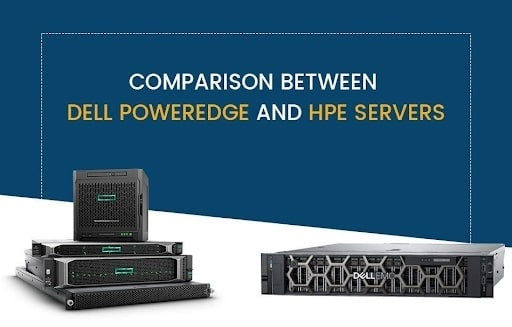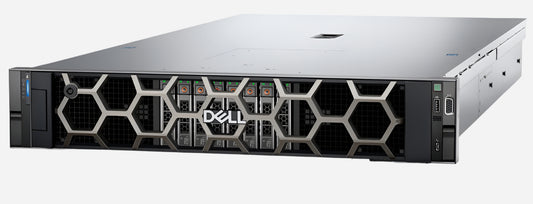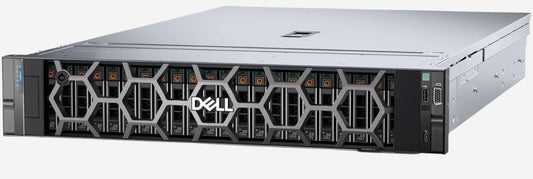
Compare servers Dell Poweredge R660 vs HPE Proliant DL360 Gen11
OLEKSANDR SYZOVShare
Compare servers Dell Poweredge R660 vs HPE Proliant DL360 Gen11
Безкоштовна Професійна Консультація з серверного обладнання.
Тел: +38 (067) 819-38-38 / E-mail: server@systemsolutions.com.ua
Конфигуратор Сервера DELL PowerEdge R760
The Dell PowerEdge R660 and HPE ProLiant DL360 Gen11 are both high-performance 1U rack servers designed for modern workloads, including virtualization, AI/ML, and enterprise applications. Below is a detailed comparison of their technical characteristics:


1. Processor (CPU) Support
| Feature | Dell PowerEdge R660 | HPE ProLiant DL360 Gen11 |
|---|---|---|
| CPU Sockets | 2 | 2 |
| Supported CPUs | Intel Xeon 4th/5th Gen Scalable (Sapphire Rapids/Emerald Rapids) | Intel Xeon 4th/5th Gen Scalable (Sapphire Rapids/Emerald Rapids) |
| Max Cores | Up to 64 cores (per socket) | Up to 64 cores (per socket) |
| TDP Range | Up to 350W | Up to 350W |
Comparison: Both support the latest Intel Xeon Scalable processors with similar core counts and TDP limits.
2. Memory (RAM) Support
| Feature | Dell PowerEdge R660 | HPE ProLiant DL360 Gen11 |
|---|---|---|
| Memory Slots | 32 (16 per CPU) | 32 (16 per CPU) |
| Max Memory Capacity | Up to 8TB (DDR5) | Up to 8TB (DDR5) |
| Memory Types | DDR5 (4800-5600 MT/s) | DDR5 (4800-5600 MT/s) |
| Memory Protection | ECC, RAS features | ECC, RAS features |
Comparison: Identical memory capabilities, with both supporting high-speed DDR5 and large capacities.
3. Storage Options
| Feature | Dell PowerEdge R660 | HPE ProLiant DL360 Gen11 |
|---|---|---|
| Drive Bays | Up to 12 x 2.5" or 4 x 3.5" (SAS/SATA/NVMe) | Up to 8 x 2.5" or 4 x 3.5" (SAS/SATA/NVMe) |
| NVMe Support | Yes (PCIe Gen5) | Yes (PCIe Gen5) |
| Hot-Swap Support | Yes | Yes |
| RAID Options | PERC 12 (Hardware RAID) | HPE Smart Array (Hardware RAID) |
Comparison: The R660 offers slightly more drive flexibility (up to 12 x 2.5" vs. 8 x 2.5" in DL360 Gen11). Both support PCIe Gen5 NVMe.
4. Expansion Slots (PCIe)
| Feature | Dell PowerEdge R660 | HPE ProLiant DL360 Gen11 |
|---|---|---|
| PCIe Slots | Up to 6 (Gen5) | Up to 6 (Gen5) |
| GPU Support | Yes (up to 3 x single-width or 1 x double-width) | Yes (up to 3 x single-width or 1 x double-width) |
| OCP 3.0 Slot | Optional | Optional |
Comparison: Both offer similar PCIe Gen5 expansion capabilities, including GPU support.
5. Networking
| Feature | Dell PowerEdge R660 | HPE ProLiant DL360 Gen11 |
|---|---|---|
| Onboard NICs | 2 x 1GbE (LOM) + optional 10/25/100GbE | 2 x 1GbE (LOM) + optional 10/25/100GbE |
| OCP Support | OCP 3.0 (optional) | OCP 3.0 (optional) |
| SmartNIC Support | Yes (NVIDIA BlueField, etc.) | Yes (NVIDIA BlueField, etc.) |
Comparison: Similar networking capabilities, with both supporting high-speed OCP adapters.
6. Power & Cooling
| Feature | Dell PowerEdge R660 | HPE ProLiant DL360 Gen11 |
|---|---|---|
| PSU Options | 800W, 1400W, 2000W (Platinum/Titanium) | 800W, 1600W, 2400W (Platinum/Titanium) |
| Cooling | Optimized airflow with Dell Thermal Design | HPE SmartCooling with dynamic fan control |
| Energy Efficiency | iDR9 power monitoring | HPE iLO6 power monitoring |
Comparison: Both offer high-efficiency PSUs, but HPE provides a slightly higher max PSU (2400W vs. 2000W).
7. Management & Security
| Feature | Dell PowerEdge R660 | HPE ProLiant DL360 Gen11 |
|---|---|---|
| Management | iDR9 (Integrated Dell Remote Access) | iLO6 (Intelligent Lights-Out) |
| Security Features | Secure Boot, TPM 2.0, Silicon Root of Trust | Secure Boot, TPM 2.0, Silicon Root of Trust |
| Firmware Updates | OpenManage Enterprise | HPE OneView/GreenLake |
Comparison: Both have robust management tools (iDR9 vs. iLO6) and strong security features.
8. Dimensions & Weight
| Feature | Dell PowerEdge R660 | HPE ProLiant DL360 Gen11 |
|---|---|---|
| Height | 1U (43.5mm) | 1U (43.5mm) |
| Depth | ~700mm (varies by config) | ~700mm (varies by config) |
| Weight | ~18-25kg | ~18-25kg |
Comparison: Similar physical dimensions and weight.
Key Differences Summary
| Aspect | Dell PowerEdge R660 | HPE ProLiant DL360 Gen11 |
|---|---|---|
| Storage Flexibility | More drive options (up to 12 x 2.5") | Up to 8 x 2.5" |
| Max PSU Capacity | 2000W | 2400W |
| Management | iDR9 | iLO6 |
| RAID Controller | PERC 12 | HPE Smart Array |
Conclusion
-
Choose Dell R660 if you need slightly more storage flexibility or prefer Dell’s OpenManage ecosystem.
-
Choose HPE DL360 Gen11 if you need higher power capacity (2400W PSU) or prefer HPE’s iLO6 management.
Both servers are highly competitive, and the choice may come down to existing infrastructure preferences (Dell vs. HPE ecosystem).
Найкращі ціни на офіційні сервери DELL PowerEdge R760 в Україні.
Безкоштовна консультація по телефону +38 (067) 819 38 38
Доступні моделі серверів зі складу у Києві:
Сервер Dell PowerEdge R760 - Intel Xeon Silver 4510 2.4-4.1Ghz 12 Cores
Сервер Dell PowerEdge R760 - Intel Xeon Silver 4514Y 2.0-3.4Ghz 16 Cores
Сервер Dell PowerEdge R760 - Intel Xeon Gold 6526Y 2.8-3.9Ghz 16 Cores
Сервер Dell PowerEdge R760 - Intel Xeon Gold 5420+ 2.0-4.1Ghz 28 Cores








